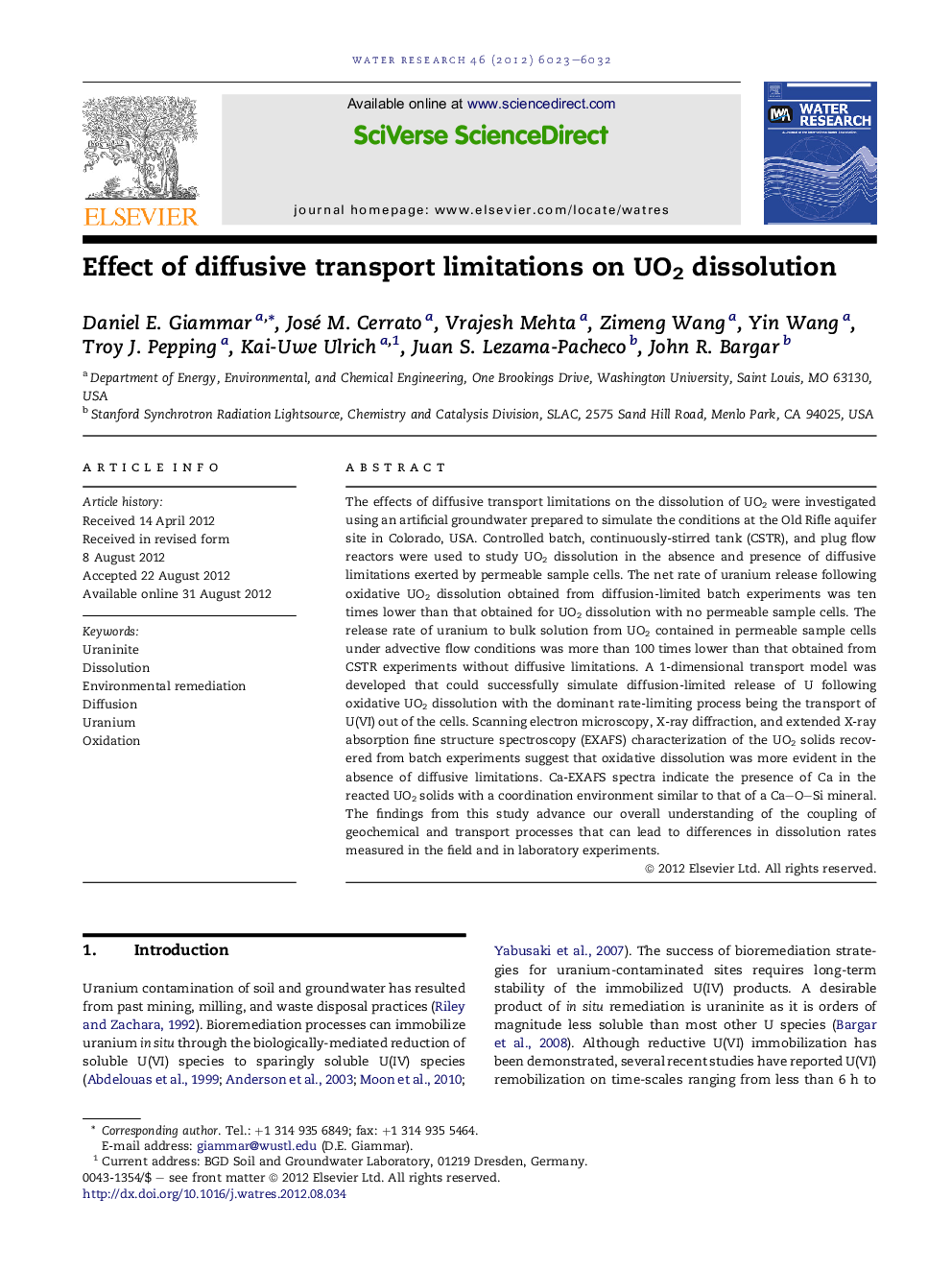| Article ID | Journal | Published Year | Pages | File Type |
|---|---|---|---|---|
| 4482046 | Water Research | 2012 | 10 Pages |
The effects of diffusive transport limitations on the dissolution of UO2 were investigated using an artificial groundwater prepared to simulate the conditions at the Old Rifle aquifer site in Colorado, USA. Controlled batch, continuously-stirred tank (CSTR), and plug flow reactors were used to study UO2 dissolution in the absence and presence of diffusive limitations exerted by permeable sample cells. The net rate of uranium release following oxidative UO2 dissolution obtained from diffusion-limited batch experiments was ten times lower than that obtained for UO2 dissolution with no permeable sample cells. The release rate of uranium to bulk solution from UO2 contained in permeable sample cells under advective flow conditions was more than 100 times lower than that obtained from CSTR experiments without diffusive limitations. A 1-dimensional transport model was developed that could successfully simulate diffusion-limited release of U following oxidative UO2 dissolution with the dominant rate-limiting process being the transport of U(VI) out of the cells. Scanning electron microscopy, X-ray diffraction, and extended X-ray absorption fine structure spectroscopy (EXAFS) characterization of the UO2 solids recovered from batch experiments suggest that oxidative dissolution was more evident in the absence of diffusive limitations. Ca-EXAFS spectra indicate the presence of Ca in the reacted UO2 solids with a coordination environment similar to that of a Ca–O–Si mineral. The findings from this study advance our overall understanding of the coupling of geochemical and transport processes that can lead to differences in dissolution rates measured in the field and in laboratory experiments.
Graphical abstractFigure optionsDownload full-size imageDownload high-quality image (209 K)Download as PowerPoint slideHighlights► Laboratory experiments simulated diffusion-limited processes in subsurface sediments. ► U release from UO2 was more than 100 times slower when diffusion was limiting. ► The rate-limiting process was the diffusion of U(VI) out of the poorly mixed zone. ► A Ca–O–Si phase is associated with the UO2 after the reactions.
